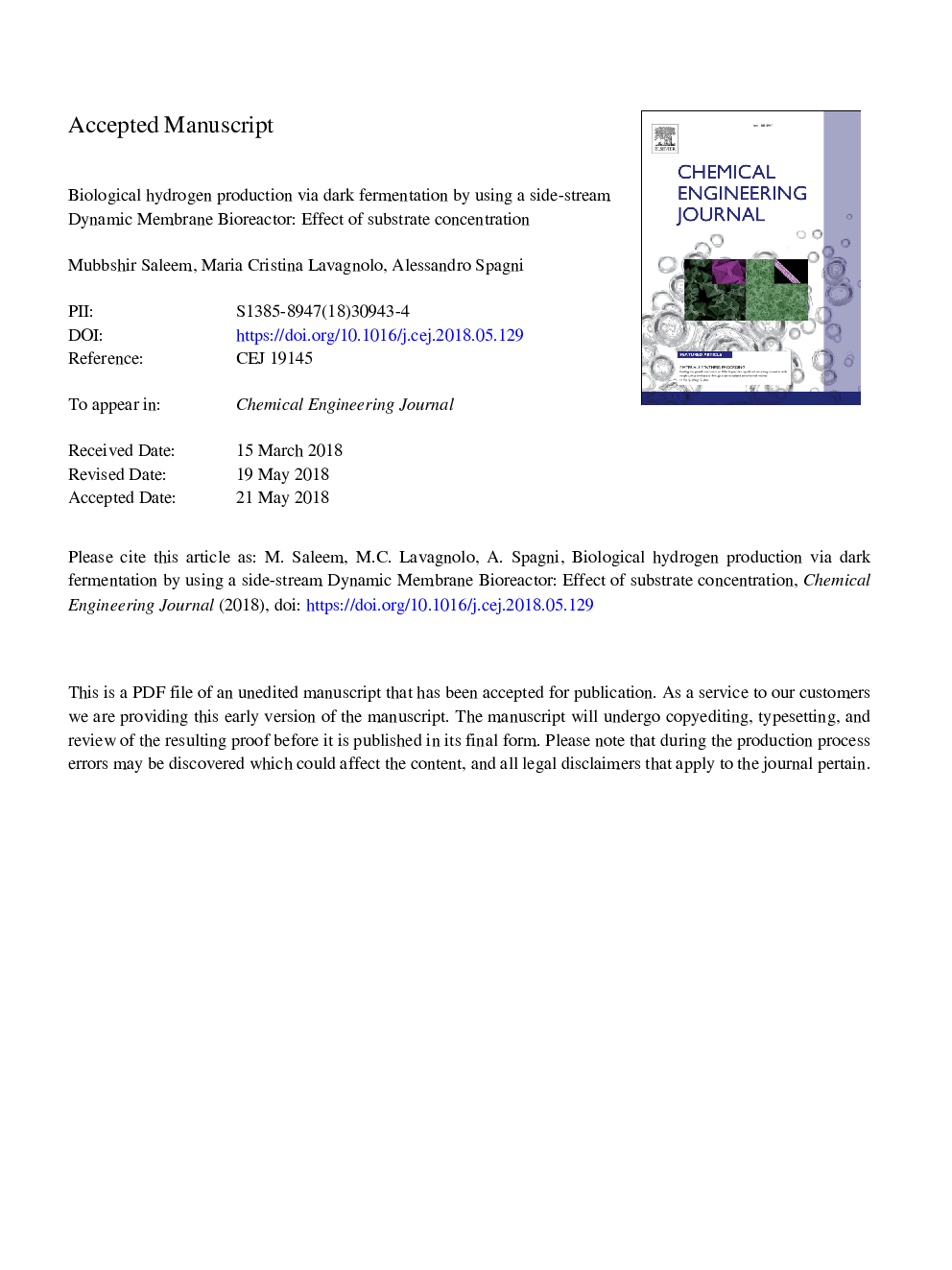| Article ID | Journal | Published Year | Pages | File Type |
|---|---|---|---|---|
| 6578645 | Chemical Engineering Journal | 2018 | 36 Pages |
Abstract
This study investigates the possibility of using dynamic membranes (DMs) as a solid-liquid separation medium for fermentative H2 production under mesophilic conditions. In particular, the fouling behaviour of DM and H2 production are studied in response to different influent COD concentrations (10-100 gCOD Lâ1). The results demonstrate that the influent feed concentration significantly affects the filtration behaviour of DM. In fact, the decrease in influent COD concentration determined an improvement of both DM permeability and solids separation. In addition, high influent COD concentration (above 30â¯gâ¯Lâ1) and resulting high organic loading rates, favoured the accumulation of volatile fatty acids (VFA), leading to the inhibition of bio-hydrogen production. The results, thus, demonstrated that stable DM filtration and H2 production can be achieved by operating the bench-scale anaerobic DM bioreactor at low influent COD concentration (10-30â¯gâ¯Lâ1) and at an HRT of approximately 1â¯d. However, stable DM was achieved applying rather low filtration fluxes (approximately 2â¯Lâ¯mâ2â¯hâ1).
Related Topics
Physical Sciences and Engineering
Chemical Engineering
Chemical Engineering (General)
Authors
Mubbshir Saleem, Maria Cristina Lavagnolo, Alessandro Spagni,
